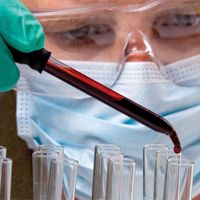Most Up-to-Date HIV Infections Per Household Estimate in the US
About 50,000 people become infected with the human immunodeficiency virus (HIV) every year in the US, according to the Centers for Disease Control and Prevention (CDC). The latest data from the CDC offers valuable insight into current trends in HIV infection.

About 50,000 people become infected with the human immunodeficiency virus (HIV) every year in the US, according to the Centers for Disease Control and Prevention (CDC). The latest data from the CDC offers valuable insight into current trends in HIV infection.
Using the National Health and Nutrition Examination Survey (NHANES), the CDC identified the prevalence of HIV per household in the US from 2007 to 2012. The estimates were based off of the 10,466 people included in the questionnaire.
“Overall, the HIV prevalence among adults residing in US households aged 18-59 from NHANES 2007-2012 was 0.39%,” the report summed up.
The analysis further broke down the specifics of HIV infections and found that men were more than three times as likely to be infected as women (0.61% and 0.16%, respectively). Also, African Americans were more likely to have HIV than all other races combined. The prevalence of HIV increased with age — 18 to 39 (0.24%) and 50 to 59 (0.64%) – but this was not of statistical significance. Prevalence was also higher among those who had used illicit drugs before (0.79%) compared to those who hadn’t (0.24%), but this was not of statistical significance either. Furthermore, education, poverty, index ration, and health insurance status did not appear to influence HIV prevalence.
The lifetime number of sexual partners (LSPs), however, was associated with higher HIV prevalence.
- Zero to four LSPs (0.14%)
- Five to nine LSPs (0.21%)
- 10 or more LSPs (0.68%)
While an estimated 1.3 people are currently living with the condition in the US, the real shocker was the percentage of HIV-positive patients undergoing antiretroviral therapy (ART) — or actually, the percentage not undergoing treatment. Only 51.9% of patients included in the survey were on ART. This is at least partly due to the finding that about one in five HIV-positive people are unaware that they are infected. This is a damaging finding since those unaware patients are estimated to transmit more than half of HIV infections.
“To help attain a national goal of having 90% of HIV-positive people become aware of their status by 2020, delivering cost-effective, evidence-based, and scalable programs to at-risk populations has been shown to increase awareness of HIV status and reduce HIV transmission,” the analysis explained.